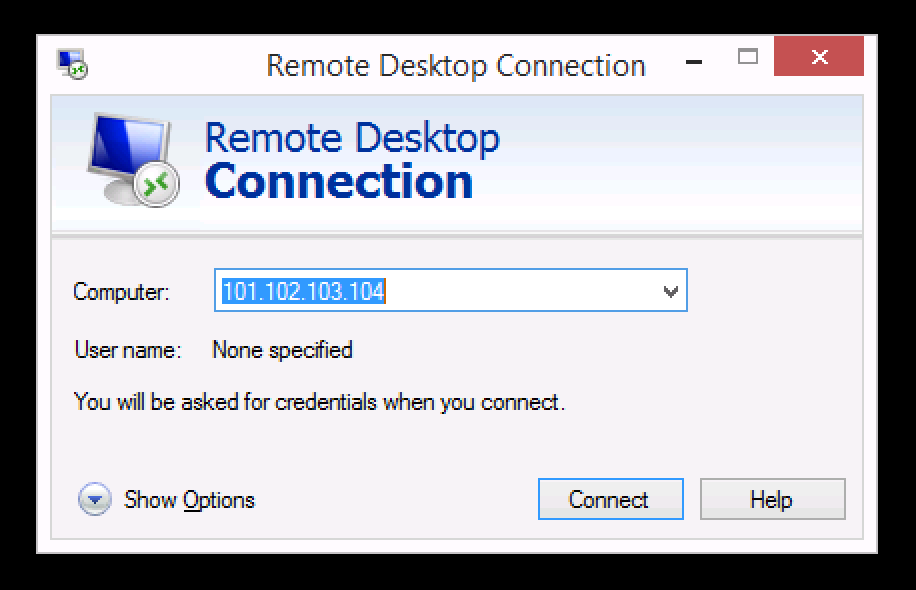How to use Remote Desktop Connection in Windows 8

Remote Desktop Connection is a powerful feature in Windows 8 that allows users to connect to and control another computer remotely over a network or the internet. Whether you’re troubleshooting a friend’s computer, accessing files and applications on your office computer from home, or providing remote assistance to a colleague, Remote Desktop Connection provides a convenient and secure way to access computers remotely. In this comprehensive guide, we’ll explore everything you need to know about using Remote Desktop Connection in Windows 8, from enabling remote access to connecting to remote computers and managing remote sessions effectively.
Understanding Remote Desktop Connection:
Remote Desktop Connection (RDC) is a protocol developed by Microsoft that enables users to access and control a remote computer over a network connection. With RDC, users can view the desktop, run applications, access files, and perform other tasks on a remote computer as if they were physically present at the computer’s location. This provides flexibility and convenience for remote work, technical support, and collaboration purposes.
Enabling Remote Desktop Access:
Before using Remote Desktop Connection in Windows 8, you’ll need to enable remote access on the computer you want to connect to. Here’s how to do it:
- Open System Properties: Right-click on the “Computer” icon on the desktop or in File Explorer, and then select “Properties.” Alternatively, you can press the Windows key + Pause/Break to open System Properties.
- Enable Remote Desktop: In the System Properties window, click or tap on “Remote settings” in the left pane. Under the “Remote” tab, check the box next to “Allow remote connections to this computer.” You can also configure additional options such as network level authentication and user permissions.
- Note Computer Name: Make a note of the computer’s name or IP address, as you’ll need this information to connect remotely.
Connecting to a Remote Computer:
Once remote access is enabled on the target computer, you can use Remote Desktop Connection to connect to it from another Windows 8 computer. Here’s how to do it:
- Open Remote Desktop Connection: Press the Windows key + R to open the Run dialog, type “mstsc,” and then press Enter. Alternatively, you can search for “Remote Desktop Connection” in the Start menu.
- Enter Computer Name: In the Remote Desktop Connection window, enter the name or IP address of the remote computer you want to connect to.
- Authenticate: Click or tap on “Connect” and enter your username and password when prompted. If you’re connecting to a computer on a domain, use the domain username and password.
- Connect: Once authenticated, click or tap on “OK” to establish the remote connection. You may see a security warning prompting you to verify the identity of the remote computer—click or tap on “Yes” to continue.
- Remote Desktop Session: After successfully connecting, you’ll see the desktop of the remote computer displayed in the Remote Desktop Connection window. You can now interact with the remote computer as if you were sitting in front of it.
Managing Remote Sessions:
While connected to a remote computer using Remote Desktop Connection, you can perform various tasks and manage the remote session effectively:
- Switch Between Windows: Use the taskbar or Alt + Tab keyboard shortcut to switch between open windows and applications on the remote computer.
- Keyboard Shortcuts: Many keyboard shortcuts work within the remote desktop session, allowing you to perform common tasks more efficiently. For example, Ctrl + Alt + Del brings up the security options menu on the remote computer.
- Disconnect or Log Off: To disconnect from the remote computer without ending the session, click or tap on the “X” button in the Remote Desktop Connection window. To log off from the remote computer, use the Start menu on the remote desktop and select “Log off” or “Sign out.”
- End Session: To end the remote desktop session and close the connection, simply close the Remote Desktop Connection window or click or tap on the “X” button in the top-right corner.
Advanced Features and Settings:
Remote Desktop Connection in Windows 8 offers several advanced features and settings for customization and enhanced functionality:
- Display Settings: Adjust display settings such as screen resolution, color depth, and window size to optimize the remote desktop experience.
- Local Resources: Configure which local resources (such as printers, drives, and audio devices) are available to the remote desktop session.
- Performance Options: Adjust performance settings to optimize performance over slow network connections or conserve bandwidth.
- Security Options: Configure security settings such as encryption level and authentication methods to ensure secure remote connections.
- Saved Connections: Save frequently used remote desktop connections for quick access in the future.
Conclusion:
Remote Desktop Connection in Windows 8 provides a convenient and secure way to access and control remote computers over a network or the internet. Whether you’re working remotely, providing technical support, or collaborating with colleagues, Remote Desktop Connection offers flexibility, convenience, and efficiency for remote computing tasks. By following the steps outlined in this guide and exploring advanced features and settings, you can make the most of Remote Desktop Connection in Windows 8 and streamline your remote computing experience.




